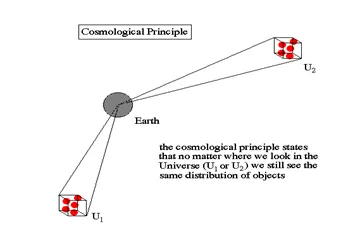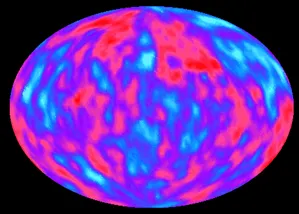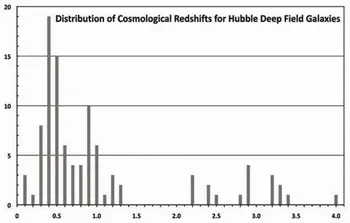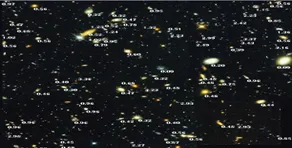

The Hubble tension examines the certainity of one’s understanding of the expansion rate of universe, while the cosmological principle on large scales, lines up the homogenetiy and isotropy. These two notions indicates a significant role in our efforts to get the basic features of the the universe.
Hubble Law
Hubble Constant (H0):
·Hubble Constant is a measurment unit to define the universe’s expansion and it is based on Hubble’s law. (2) ·The Hubble Constant is found by Edwin Hubble in 1929. ·The Hubble Constant is changing up to the time . H0=V/d
Figure 1. Edwin Hubble
Hubble Tension:
·Hubble Tension indicates the current expansion rate of universe which being faster than the astronomers expect based on the inital conditions of universe and our current understanding of its evolution.1
·There are two ways to measure the Hubble constant: Cosmic Microwave Background Radiation (CMB) and Type la supernovae (SNe la). ·Between two methods, There is a difference of almost 9–10% and this gap is too large to be clarified by statistical uncertainties. Due to these, in cosmology Hubble Tension has became an significant research topic.5
Figure 2. Same distributions in universe4
Cosmological Principle:
·Cosmological Principle which cannot demonstraded mathematically, indicates that on large scales the universe's isotropic and homogenous.4 •Homogenous refers that the universe has the same material and energetic distribution in everywhere. •Isotropic refers that the observations made in any aspect of the universe is the same at any observation made in another aspect.For cosmological principle, measurments of the cosmic microwave background (CMB) is the most obvious modern evidince. CMB is a display of photons radiating from early universe. The homogenous and the isotropic is mirrored in its incidental view.4

Figure 3. Cosmic microwave background (4)
Why Cosmological Principle may be true:
Observations: Galaxy Distribution is evenly distributed and CMB is a evidence.
Theories: Standard Cosmological Model (Lambda-CDM) assumes on large scales, the universe is isotropic and homogeneous.
Statistics: Analyzes on large scales indicates the universe is isotropic and homogeneous.

Figure 4. Distribution of Cosmological Redshifts for Hubble Deep Field Galaxies7
Why Cosmological Principle may be false:
Observational Anomalies: Larger structures may show that the universe is not the same everywhere and some differences in CMB can indicate that he universe is not completly the same.
Local Deviations: As evidence of the lack of homogeneity everywhere, the existence of large voids and galaxy superclusters can be shown at smaller scales.6
Theoretical Issues: For explaining all observations, some theoretical models can be unefficient such as redshifts.

Figure 4. Distribution of Cosmological Redshifts for Hubble Deep Field Galaxies7
Early Universe: Quantum fluctuations, which arise as a result of quantum mechanical interactions, in the very early universe, can cause small-scale structural differences. Due to that, the large-scale structure of the universe can get affected.7

Figure 5. Hubble Tension and Cosmological Principle Relationship7
Conclusion:
•Some aspects of the Hubble tension might suggest that our hypothesis about the isotropy and homogeneity of the universe should be reconsidered. •Although the Hubble Tension defiances our present understanding of the universe's expansion rate, it does not supply evidence to falsity or for the truth for the cosmological principle directly.References:
1. NASA's Webb, Hubble Telescopes Affirm Universe's Expansion Rate, Puzzle Persists. science.nasa.gov. https://science.nasa.gov/missions/webb/nasas-webb-hubble-telescopes-affirm-universes-expansion-rate-puzzle-persists/.
2. Howell, E. What Is The Hubble Constant? Space.com. https://www.space.com/25179-hubble-constant.html.
3. Warren, S. What is the Hubble constant? | University of Chicago News. news.uchicago.edu. https://news.uchicago.edu/explainer/hubble-constant-explained.
4. Cosmological Principle. pages.uoregon.edu. https://pages.uoregon.edu/jschombe/cosmo/lectures/lec05.html.
5. Su, X. (2021). Tensions between measurements of the Hubble constant from the early and late Universe. ResearchGate. https://www.researchgate.net/figure/the-Hubble-constant-measured-by-different-methods-The-H0-values-measured-through-CMB-and_fig1_354458338
6. The Cosmological Principle Fails? Answers in Genesis. https://answersingenesis.org/astronomy/cosmological-principle-fails/.
7. Cosmological Principle. astro.wku.edu. http://astro.wku.edu/astr106/structure/cosmologicalprinciple.html.